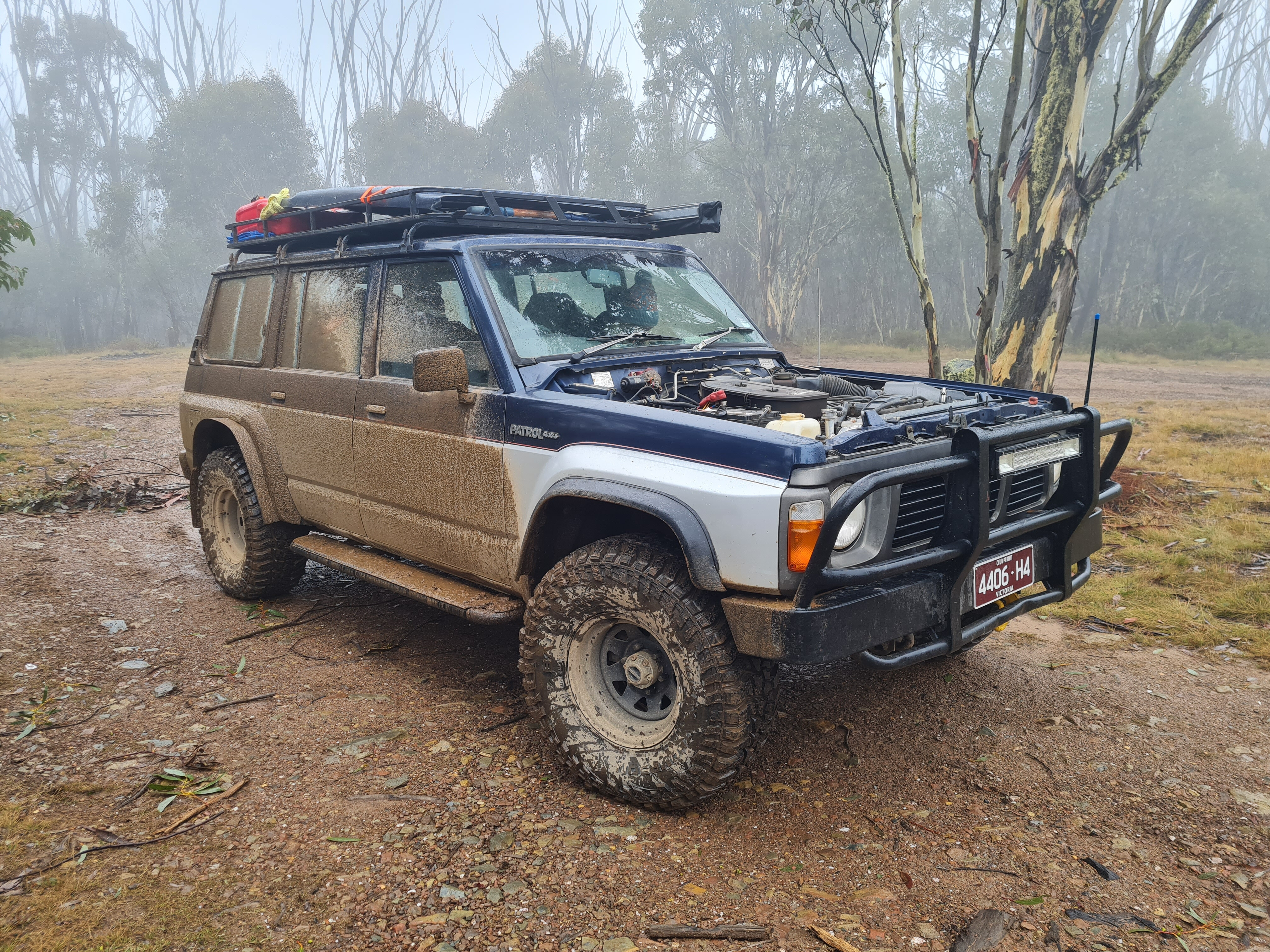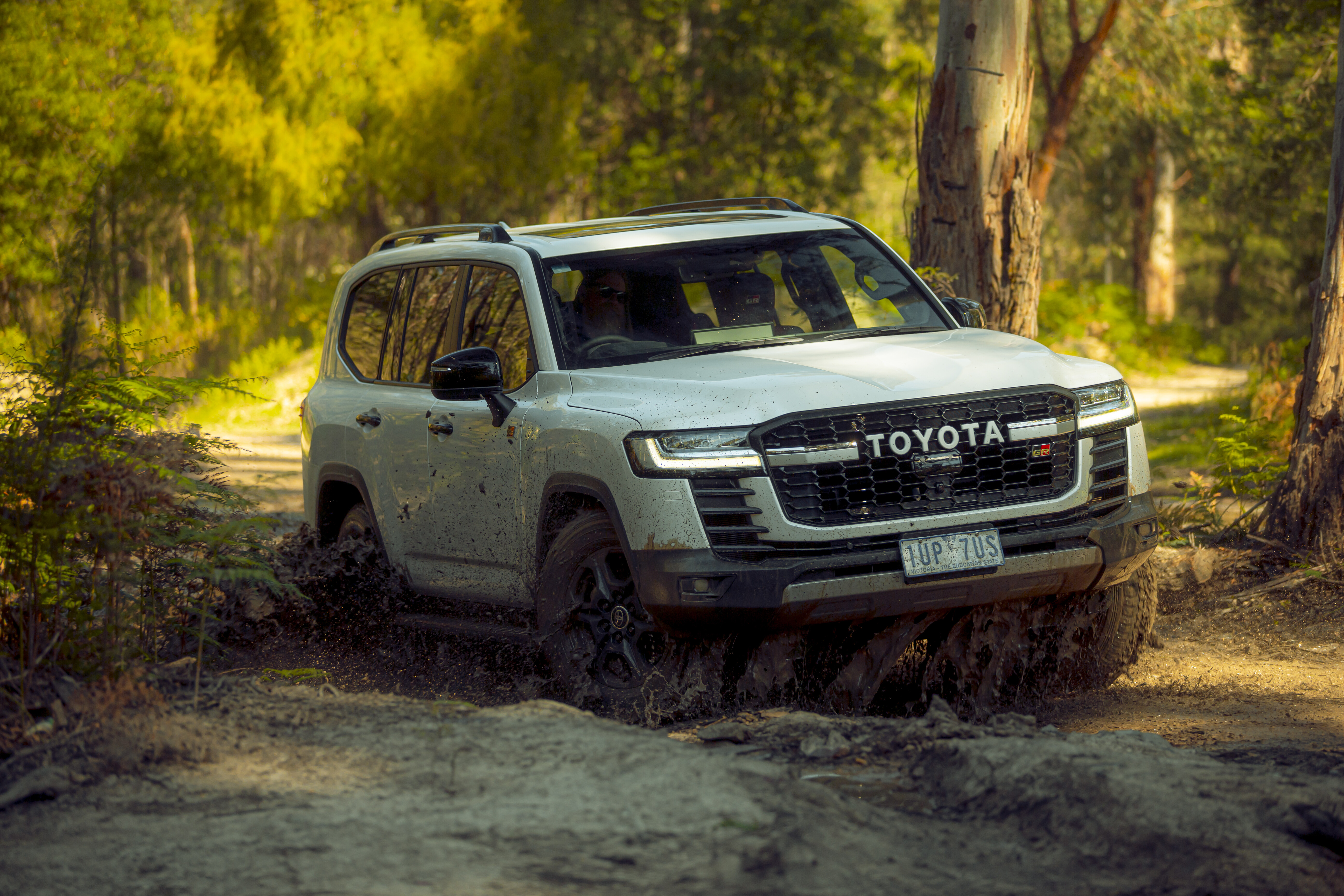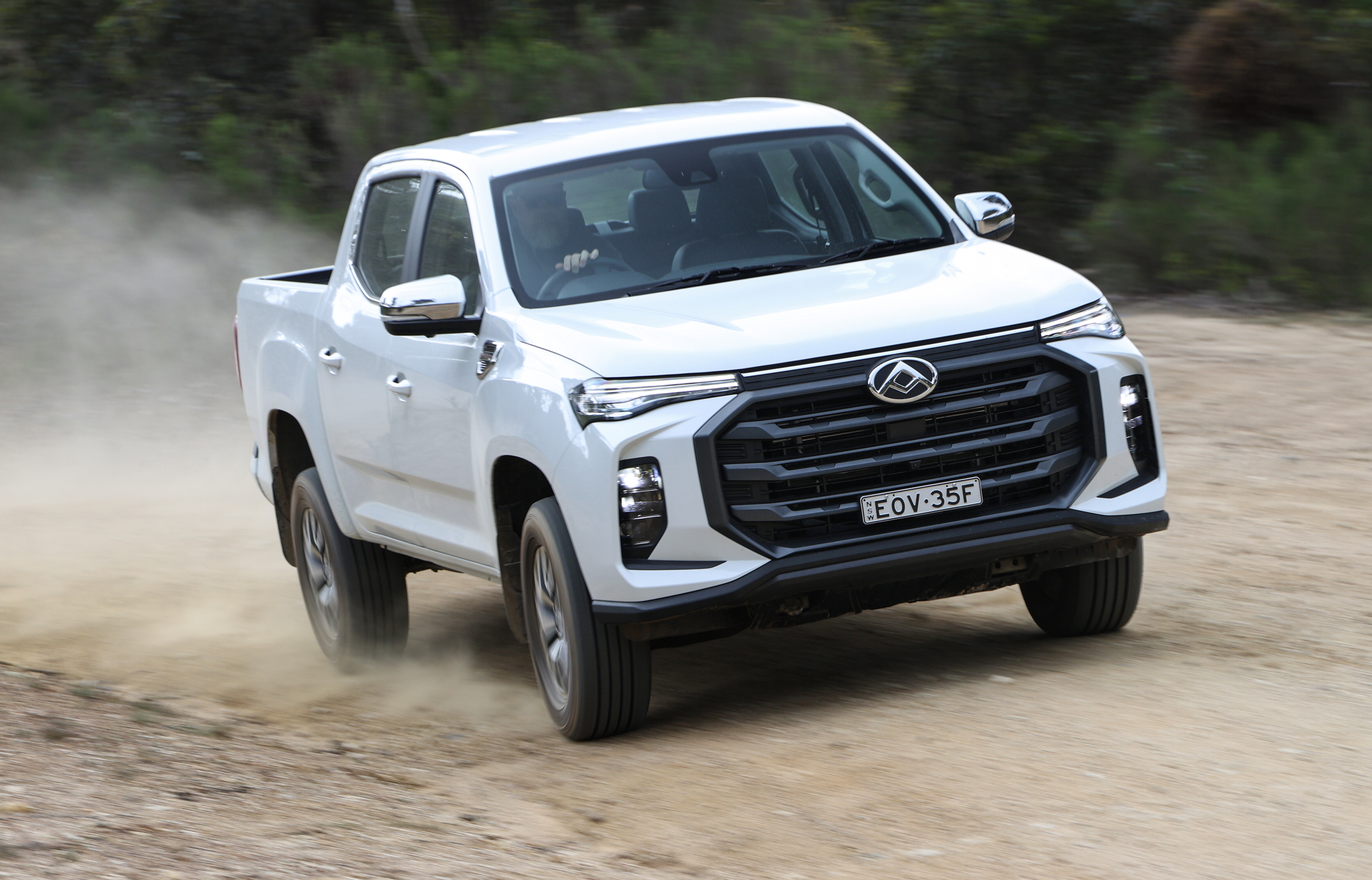VISIT any sheep market and you’ll see farmers driving Land Rover Defenders; flanks muddy, panels dinged.
This article was first published in 4×4 Australia’s February 2012 issue.
In the back there’ll be a long piece of wood kept to wedge between the lowered tailgate and the rest of the load bay. Without it, the sheep the Defender is supposed to safely transport could slip between the gap and, as one farmer we know has it, “snap their legs like carrots”.
The Defender is a versatile workhorse, but it’s also flawed: the driver’s seat feels like it should slide back further; the steering wheel doesn’t adjust and has no airbag; the handbrake is an awkward reach away; the turning circle is dreadful; it’s loud and unrefined and the whole body shimmies and floats when you pass over bad surfaces at speed.
None of this has killed or will kill the Defender, which remains remarkably similar to the Land Rover Series I of 1948. And with its flaws comes character often lacking in modern cars; that’s why almost two million have been sold, and why it’s one of the most iconic vehicles in history, with a fiercely loyal fan base and thriving businesses and enthusiast magazines.
But the end is nigh. In 2015, EU6 emissions regulations will force the current diesel engine into retirement. This, of course, is surmountable, but it’d be like keeping a braindead patient on life-support. “We didn’t intend to make the Defender EU5 compliant, but we did,” says Land Rover PR manager Richard Agnew.
“So, yes, EU6 is possible, but in 2018 it really is game over with crash-testing legislation and pedestrian protection compliance in the US.” Hence Land Rover is readying an all-new model for 2015, and the DC100 concepts – Defender Concept, 100-inch wheelbase – are design studies to prepare us for what comes next.
Design studies that happen to move, that is, and today we’re first to drive them, before the blue, more production-viable DC100 gets shipped to the LA show along with the yellow, further flung DC100 Sport.
As they roll off the delivery trucks at Land Rover’s Gaydon test track – sans finishing details – it’s hard not to be struck by the parallels with BMW’s ‘new’ Mini of over a decade ago. Here’s another replacement for a British icon that’s evolved glacially over the decades, yet is suddenly being fast-forwarded while diehards froth at the mouth and rage incandescently on internet forums.
Taking the flak is Land Rover design boss Gerry McGovern. The last time I interviewed McGovern was in a London studio in 2007 about the LRX concept. It too was controversial; a Land Rover that looked to Fendi handbags more than rucksacks. It’s now the Range Rover Evoque – barely changed from concept – and 32,000 pre-orders are proof McGovern’s instincts were right.
He’s buoyed by the success, but still defensive when talk turns to DC100. “It’s interesting to speak to the traditionalists,” he says. “They say ‘it’s not broken, don’t fix it’, but the Defender is broken: soon we won’t be able to sell it.
Crash performance regulations are coming, ergonomically it’s not competitive and the manufacturing process is outmoded; we’re using up-to-date technology and processes, so why design the next Defender to look like a car made 60 years ago?” “We’re a business,” says McGovern.
“In 1971 we sold 60,000 of the Defender’s ancestor; now that’s down to 18,000. But to the left of the Defender you have 5.4 million cars sold in the multi-purpose/crossover market, and to the extreme right you have about 2.2 million in the commercial-vehicle segment.
The Defender should be able to span both those segments, so there’s no reason why we can’t get back to north of 60,000 units. If we just look back we’ll fail; we need to respect the past, not be harnessed by it. “We’re a brand in transition, we’re on a roll,” he continues.
Land Rover Defender will return
“We’re clear on Range Rover – it’s incredibly capable off-road, but the focus is on luxury execution – but we’re about to define Land Rover. Land Rover won’t be about luxury, but it won’t be about the opposite; it’s about premium durability.”
The concepts look radical – a hybrid of a Tonka toy, the Land Rover Forward Control-based Judge Dredd car from the 1995 film, and the FJ Cruiser, Toyota’s own retro reinterpretation. But you don’t need a signpost to know the DC100 is a Defender: the short overhangs, stance, front and rear lights, strong shoulder-line, flat-cap roof, bulging arches, vent in the wing that might suck air through a snorkel.
It’s an inspired design, but it’s not that radical at all. “Look at the reaction,” says McGovern. “Ninety percent is positive, eight percent is sitting on the fence, and two percent is ‘kill McGovern’. But all the resistance is about off-roading and farmers; that capability is a given, we’re not walking away from it.”
McGovern points out that much of the anger relates to DC100’s concept-car details, rather than the bigger picture: the fact it wears 22-inch alloys, for instance, rather than the fact the breakover and departure angles are excellent. Land Rover’s intention is for the new Defender to outperform the old, on- and off-road.
“They say ‘why isn’t the front upright anymore?’ Because it’s more aerodynamic; it’s more functional! You have to be able to kick the hell out of a Defender, and that’s linked to the design, but that has to be put into a modern context.
The original Land Rover was invented for 1948, today people use it for other things; I lived in California and there were all these surfers with a real mish-mash of vehicles. The DC100 Sport would have been perfect for them, but that lifestyle wasn’t around when Land Rover came out.”
These days, points out McGovern, Land Rover’s design department shares equal billing with engineering. “Design has become fundamental,” he says. “Before, it was a consequence of manufacturing or engineering. That’s not acceptable anymore.
Design is the differentiator, it’s the emotional connection.” Of course, Land Rover knows it needs to back up the looks with proper off-road tech; it’s got to appease those 18,000 traditionalists while appealing to 40,000 newcomers. Sure enough, the DC100 is chock full of innovation.
Says Tony Harper, Land Rover’s head of research: “We’re forever looking at stuff that’s relevant to the brand’s backbone of versatility and capability, and that’s what we’re showcasing on DC100. Some of it is near-term, some further away. We’re not saying which is which, but it shows what we’re thinking.
“Some technologies we have, some we don’t, so we look at other industries, then we take a bit of that jigsaw and put it with another. We’re looking at ways to understand the physical condition of the driver using biometric data, for instance; that comes from the medical industry, but we’ve also looked at the pharmaceutical and defence industries for inspiration.”
The next-generation Terrain Response – as seen on current models with settings for mud and ruts, gravel and so on – will be predictive, using scanners to read the road ahead to automatically select suitable drivetrain and suspension settings, rather than relying on the driver to select them.
There’s also a new innovation called Wade Aid that peers into murky depths to check if they’re passable, while Terrain-i scans ahead for obstacles and suggests alternative routes around them. Once that lot has taken Ray Mears as far as it can into the forest, he’ll be able to grab the DC100’s central touchscreen and use its GPS navigation to proceed on foot.
There’s advanced mechanical stuff too, like on-demand spiked tyres (waaaay off in the future) that inflate a secondary chamber within the tyre to push small spikes proud of the rubber for driving on ice.
Although both our concepts ride on the same Range Rover Sport suspension, the press material suggests a more traditional, Range Rover Sport-inspired air-sprung chassis for the DC100, but a more road-like set-up using Jaguar-style adaptive dampers for the DC100 Sport, hinting at two variants for road and off-road; Land Rover insiders downplay this.
Then there’s Driveline Disconnect: it de-couples the rear of the propshaft from the centre diff, making the DC100 front-drive until conditions demand the full all-wheel drive treatment. Like the design, Harper knows there’s a lot at stake here: “It’s an emotional issue, isn’t it?” he says.
“Is it four-wheel drive, is it two-wheel drive? But we’re taking out rotational inertia and churning losses wherever we can to reduce emissions.” Land Rover said the DC100 could have ‘hybrid compatibility’.
So could the production version be a hybrid? “Potentially yes, and we’ll show a hybrid soon with a bigger car [Range Rover],” reveals Harper, “but a lot of a hybrid’s weight comes with the battery, and that’s not going to reduce significantly over the next few years. So is it better to add a lot of weight and cost for lower C02?”
He leaves the answer hanging, but I’m ticking the ‘no’ box for now. With the final bits of glazing installed and the Land Rover lettering freshly stuck onto the blue concept’s bonnet, we’re ready to roll.
Now, the official line is that the DC100 will ride on a new lightweight, mixed-alloy chassis – “we’ve got the Tata steel guys over the road,” points out Tony Harper – and be powered by 2.0-litre petrols and diesels, which is absolutely the intention for the production version, but these concepts have been knocked together in four short months, and they’re based on shortened Range Rover Sport platforms and come with that car’s 5.0-litre V8.
The bodies are made of high-density foam and fibreglass, the black trim from laser-sintered nylon, the bonnet from carbon to stop it melting… again, the rims and some of the interior trim hewn from great lumps of aluminium. Value? “Around £2.2 million,” says the fidgety Land Rover man.
And your off-road course is which way? Climb into the cockpit and sit on the Sport’s very firm seat with its ‘tribal tech’ zebra design and aerospace-derived Superfabric, the glasshouse like a pair of wraparound shades.
It’s glitzy in here, but it’s also pared back and simple: just like the Series I, there are no instruments directly ahead of the driver; the floors are durable Superfabric, the door cards are spare and covered in water-repellant, breathable Ultrafabric, as is the thick horizontal beam that runs across the dash and holds just the central touchscreen, the gearstick and the automatic handbrake button, all framed by a pair of chunky aluminium grab handles.
This arrangement leaves space for a central fold-down seat and an extra pair of legs. View it in broad brushstrokes rather than being sucked in by the magpie details and you’ll see a perfectly feasible production proposition. Then reach down and press the start button in the centre console.
The V8 erupts and the DC100 rocks and crackles with each prod of the accelerator. It sounds fantastic; everyone smiles and nods. I tentatively click the gear selector into drive, we roll onto the track and it feels absolutely surreal to be driving something so outrageously cool amid such prosaic surroundings, like I’m riding the Back to the Future hoverboard down Coronation Street.
Clearly, these impressions don’t relate to any future Land Rover, but it’s a memorable experience: I have to be careful to avoid putting too much steering lock on for fear of scything away the bodywork; the brake pedal is bizarrely, spongily calibrated; the throttle absolutely razor sharp; the heavyweight body leans and creaks and bangs as I hit all of 10mph.
It is, after all, a concept car. It’s easy to rule out the DC100 Sport as too radical, but what of the hardtop DC100? Could we see it reach production largely unchanged, much like LRX became Evoque? “Given the Defender’s emphasis on functionality, it will need to change more than Evoque did,” says McGovern.
“I’ve tried to make it like an athlete in a suit – not too overt about its capabilities – but after living with the design I’d like to reduce the visual bulk.” I swap between cars and climb into the blue DC100, the two DCs circling the track in tandem.
It’s genuinely thrilling to spy Roger Crathorne – Land Rover’s off-road guru, a man born within sight of the old LR factory on Lode Lane – capturing us on his camera, seeing fit to record this moment for posterity when he’s so constantly over-exposed to all things Land Rover.
Today really does feel like a big moment in automotive history: the Land Rover Defender is about to change for good. And I mean that in both senses of the word.





